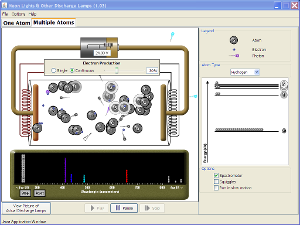- Scan through the first 12 slides. Then, discuss the statement "Why is sunlight responsible for life on earth?" List what evidence you have that supports the statement.
- Focus on the radius and mass of the Sun and compare it to our Earth and Jupiter.
- Finally, look at the differences in temperature between the core and the convection zone, and try to explain it to me using a meaningful analogy. (Example: the difference between a tornado and a breeze is like a semi of rice grains compared to a dozen).
Take notes regarding:
The Sunspot Cycle (this should take 20 minutes to a half hour)
Maunder Diagram
Space Weather
Go to the link below. Try looking at a spectra that is 350 degrees, 1000 degrees, and 6000 degrees. What amount of visible radiation is shown in each of those? Why do we have blackbody spectra for stars?
Link: Black Body Radiation
==========Day 2
====
We watched excerpts from:
Citation (MLA)
The Sun. National Geographic. 2004Learn360. 19 September 2012
http://www.learn360.com/ShowVideo.aspx?ID=128186
Citation (MLA)
Secrets Of The Sun. A&E Television Networks. 2007Learn360. 19 September 2012
http://www.learn360.com/ShowVideo.aspx?ID=227115
Complete the sun lab using the sheets provided, and the link shown below
Link: Sun Lab
======Line Spectra=======
Line Spectra Lab
Investigate screen and experiment with the situations. Predict what will happen under the following situations:
What will happen when the voltage is increased?
With the voltage at a given amount, what will happen when the heater percentage is reduced?
If conditions are set so that light is being produced in multiple molecule mode, what will happen in single atom mode? Check your predictions.
Questions: 1. What condition(s) must be met in order for light to be produced by a discharge lamp?
2. What event(s) occurs to actually produce the light we see?
3. Does the spectrophotometer indicate unique spectrums for each gas?
4. What types of electromagnetic radiation are produced?
5. How could this phenomenon be used by astronomers?
=========

No comments:
Post a Comment